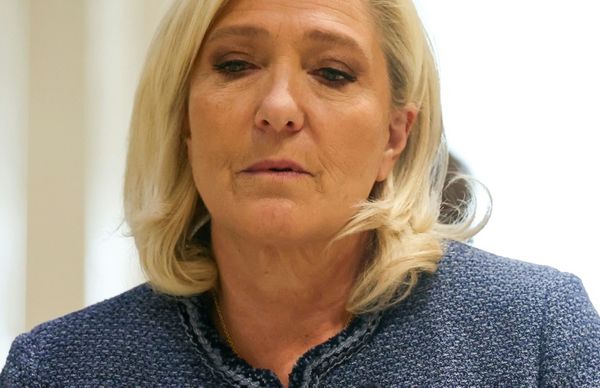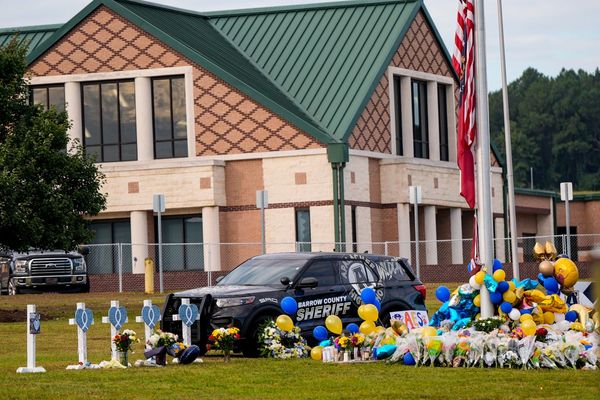
Exclusion can result in hurt feelings, even when there’s no malicious intent behind it. But educators, pediatricians and researchers say online exclusion can be overt, particularly in group texts or chats on whatever platform teens use to communicate and make plans, be it Apple’s iMessage, Snapchat, Instagram—even Zoom.
These experts say they’ve been seeing more of this since the pandemic, as more of kids’ lives shifted online. Digital exclusion can be more insidious than overt forms of bullying that involve teasing and threatening, they say.
“Rather than sending a mean message, what teens are doing more now is excluding people, including by creating a parallel group chat to talk about one person without that person in it," says John Kalapos. He’s the associate head of school at Buxton, a small Massachusetts boarding school I profiled for its recent smartphone ban. One reason for the ban was this specific behavior, he adds.
“It creates power dynamics that are physically invisible but socially potent," says Mr. Kalapos.
Schools have made antibullying campaigns a priority, so most kids now recognize what constitutes bullying. But online exclusion is harder to discern, call out and punish, and the targets often feel ashamed about it, according to experts.
Being left out of a text chain or group chat can freeze kids out of online conversations that help cement social bonds. Parents who want to help might not know about the group conversations in the first place or understand who’s missing from them. And missing chats can lead to in-person exclusion because that’s where kids now make plans.
No child—or adult—will be included all the time. But when someone is intentionally being isolated, families can take steps to address it. (More on that below.)
‘Am I Not Good Enough?’
Joseph Olkha, a 16-year-old in Los Angeles, says he has been kept out of group chats. He remembers hearing friends talk about the fun they’d had playing paintball over the weekend and realizing he hadn’t been invited. Other times, he’d see social-media posts of parties he didn’t know about.
Joseph says he’s also been left out of playing videogames with friends. When he’d message them about joining a game, he’d be ignored.
“Is there something socially wrong with me? Am I not good enough? Am I not normal?" he recalls wondering.
Joseph says being excluded took a toll on his self-esteem. He says he knows that he can be socially awkward, even nerdy, and that other kids his age are better at communicating online. “People would tell me I was a dry texter, that I would seem uninterested when I texted," he says.
Joseph, who notes that he always had an easier time talking to older teens and adults than to people his own age, decided he’d had enough of high school. He finished early, enrolled in a community college, and hopes to transfer to a four-year university in fall 2024.
Though hurt, he says he doesn’t hold grudges against classmates. He’s come to embrace what makes him unique, even if it means not always fitting in. “I’m a nerd and I love it," he says.
Not everyone is so resilient. Researchers from Children’s Hospital of Philadelphia in June released a study showing that cyberbullying—bullying that takes place on chat and social-media platforms rather than the playground—is associated with suicidal thoughts among adolescents who have been targets. The study’s authors recommend doctors screen children for cyberbullying like they do for depression.
‘Passive-Aggressive Bullying’
Laurel Aronian, a 15-year-old high-school sophomore in Westchester County, N.Y., says exclusion from group chats became more apparent during Covid-19. She would sometimes have Zoom calls with friends after school, but noticed at other times that her friends’ contact status indicated they were on Zoom calls without her.
“It’s very easy to feel left out," she says.
She says bullying that doesn’t involve insults can be explained away by the people doing it, which makes it difficult to flag to grown-ups. For example, if an adult gets wind of a group chat and asks kids why someone wasn’t included, they can say it was an oversight.
Kids who intentionally leave others out often don’t come across as cruel, and are often liked by teachers, says Andrea Lovanhill, chief executive of Committee for Children, a nonprofit provider of social-emotional learning curricula.
At the end of Laurel’s eighth-grade year, students had to deliver a speech on something they felt passionate about, and she chose to talk about what she calls passive-aggressive bullying, or “under-the-radar bullying."
When she surveyed her fellow eighth-graders, most respondents said they’d been bullied in a subtle way, while some said they’d witnessed such treatment but hadn’t stopped it.
Recognizing and Dealing With Bullying
Exclusion can hurt even when it’s part of normal childhood development and socializing. But when kids intentionally and repeatedly exclude someone from online groups, with the purpose of making that child feel bad, it can be considered bullying, says Ms. Lovanhill.
She suggests parents help their children recognize whether they were left out due to changing friendship dynamics or whether they were actually being bullied by going through different scenarios with them. Parents can also ask their children how a true friend would treat them and suggest they try to make friends with other people.
Several antibullying organizations, including Stopbullying.gov, which is managed by the U.S. Department of Health and Human Services, recommend teaching kids how to be “upstanders," by stopping or reporting bullying when they see it. For example, when teens notice that a friend has been left out of a group chat, they can ask why that person is missing, and suggest adding them.
Laurel Aronian says when she has a hard time dealing with being excluded, she focuses on hobbies like chess and music. “It lets me put energy into improving at something I have control over," she says.
She’s also made it a priority to be inclusive herself. When she meets new people in her chess club, for example, she makes sure to invite them to the club’s group chat, of which every member is a part.
“The only way to combat bullying is by being nice," she says.







